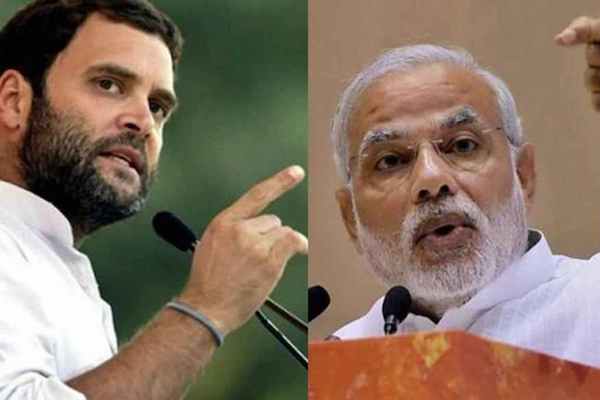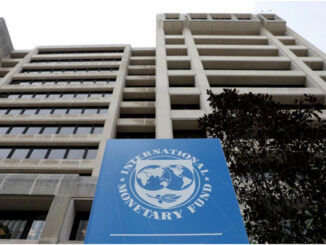
“Yes”, says Muralidhar Rao; Rajeev Gowda says “No”; For Sandeep Shastri, “It’s Complicated”
Yes | Muralidhar Rao
The JD(S) and the Congress are two faces of the same coin. The BJP will win with a majority
Yes, we will definitely wrest power from the Congress. The Bharatiya Janata Party’s preparation, both organizationally and politically, points to a victory for the party. We can also sense that the mood of the people in Karnataka has changed. People have problems, which the State government has failed to address. Whether it is in the agricultural sector, infrastructure, or urban management, mismanagement has become a major issue. People have been agitating for quite some time and their disillusionment with the ruling Congress is complete. The BJP leadership has worked hard to mobilize public opinion against the ruling party. The BJP will continue to do what it has been doing in the rest of the country, which is to fight against the Congress.
Issues in Karnataka
As far as the issues in the campaign are concerned, in the last two years, the farm sector has been in the grip of an acute crisis and the government has been unable to address and arrest the problem of farmers’ suicides. Close to 3,800 farmers have committed suicide in the last five years. The government has been insensitive to the issue. Even before the elections, we organized a special campaign for farmers, collected grains from them, and pledged to put an end to the crisis.
Look at Bengaluru. It has become a city of crime. It is full of potholes. It faced floods. Even the Lokayukta, P. Vishwanath Shetty, is not safe in his office and the attack on him demonstrated how law and order has deteriorated in the State. Corruption, scams and scandals have added to people’s restlessness with the ruling party. The attitude of the State government to terror groups, particularly in coastal areas, is appalling. More than 24 activists have been killed by extremists. Not a single case has been pursued; arrests have not been made. The Congress’s silence on the Popular Front of India, which should have been banned a long time ago, appears to indicate that the PFI enjoys protection from the government.
We have been accused of associating ourselves with the Bellary brothers. This has been completely misrepresented. Janardhana Reddy, who has been named in the FIR, has not been given a ticket and we have not used him in the campaign. His brother is a sitting MLA. There is no case against him. Also, don’t you think Chief Minister Siddaramaiah could have taken action against the two brothers? Why didn’t he?
The BJP’s promises
I think the promises made in our manifesto will persuade people to vote for us. In the farming sector, we have spelt out the issues we are going to pursue. For instance, to address the debt crisis, we have declared a ₹1 lakh loan waiver for farmers rom nationalized banks and co-operative banks.
Bengaluru is a hub for translating the global ambitions of India. Instead, we now see the city being associated with crime and corruption. On the welfare front, we have conceptualized many programs for the people of Karnataka: free education for all students in government colleges, for BPL families, smartphones for women. We are working on a growth-centric plan and that’s our promise to the people of Karnataka. We will get more than 150 seats. I have no doubt that a massive majority will come to the BJP. The Janata Dal (Secular) and Congress are two faces of the same coin. Both are pursuing vote-bank politics and are family-driven parties. We will win on the promise of development alone.
(Muralidhar Rao is a national general secretary of the BJP)
(As told to Anuradha Raman)
NO | Rajeev Gowda
The voters prefer a stable government that has ensured inclusive growth
Prime Minister Narendra Modi belatedly descended on Karnataka in a desperate attempt to revive the BJP’s collapsing campaign. Unfortunately for him, the ground reality will demonstrate that Karnataka is not Gujarat. Mr. Siddaramaiah’s inclusive welfare programs have ensured that voters remain steadfastly with the Congress.
Achievements of the Congress
Hunger will soon be history due to the Anna Bhagya scheme. Mathru Poorna is transforming the health of women, during and after pregnancy, while ensuring healthier children. Indira canteens help the urban poor access a nutritious meal at low cost. Dairy farmers received higher prices and children get milk in schools. Farmers gained from a loan waiver, subsidized rental equipment, and farm ponds. An integrated e-market increased farmer’s income by 38% in 2015-16, according to a Niti Aayog report.
Karnataka leads India in investment intentions and follow through. The youth flock to Bengaluru, India’s start-up capital. A quarter of jobs created in India were in Karnataka, as reported in April 2016. Mainstays like IT and biotechnology crossed revenues of $50 billion. With an average GSDP growth of 8% over five years, people will be happy to stay with a government that works.
Nightmare years of the BJP
Voters have not forgotten the five nightmare years, which were marked by incompetence and instability, when the BJP ran Karnataka. Three Chief Ministers took turns to defend corruption on a scale that shamed the State. B.S. Yeddyurappa led his Cabinet colleagues, the Reddy brothers, Katta Jagadish, Krishnaiah Setty, Harta Halappa, etc. to jail. Mr. Modi’s rhetoric and flood of falsehoods cannot cover up that sorry track record, especially when the same crew is back helming the BJP’s election campaign.
A track record in abetting instability is also true for the JD(S). Widely regarded as untrustworthy, it is now confined to the Old Mysore region. It will garner at least 10 seats less than its 40 in 2013. However, it has kept the BJP from gaining a foothold in Old Mysore. The BJP’s absence in Old Mysore means that in 10 of Karnataka’s 30 districts, it is likely to win only a handful of seats. Its old Hindutva laboratory, the coast, rejected it in 2013, and will do so again, turned off by polarization. The BJP won nearly half of Bengaluru Urban last time but will do worse now. It is in closely fought Mumbai-Karnataka and Central Karnataka that the BJP is hoping to gain seats. While it may be aided here by the Karnataka Janata Paksha and the Badavara Shramikara Raithara Congress coming back to the BJP fold, the chemistry has gone all awry owing to competing factions. In Hyderabad-Karnataka, it is counting on the eight seats given to the Reddy family to help it, but the leadership of Mallikarjun Kharge and the fact that the United Progressive Alliance granted 371(J) status to this region will ensure that the Congress stays ahead. Dalit anger at the BJP’s injustice nationwide is reflecting across Karnataka. In contrast, Mr. Siddaramaiah has allocated budgets in proportion to the population percentage of Scheduled Castes and Scheduled Tribes.
Opinion polls show that Mr. Siddaramaiah remains the number one choice for Chief Minister. According to polls, voters consider the BJP to be the most corrupt party. A section of the Lingayats is expected to quietly vote for the party that responded to their aspirations. The Supreme Court awarding a larger share of Cauvery water to Karnataka has marked Mr. Siddaramaiah as a champion of the State’s interests. He has also highlighted Kannada pride. A stable government which has delivered to all sections and ensured inclusive growth is what the voters prefer. On May 15, the Congress will be back with a bang, setting the trend for 2019.
(Rajeev Gowda is a Congress MP and chairman of the AICC’s research department)
It’s Complicated | Sandeep Shastri
In several constituencies, the BJP, JD(S) and the Congress are engaged in a three-way fight
The Karnataka electoral contest seems to be heading for a photo finish and is fascinatingly complex and suspense-filled.
Contradictory trends
For the last three decades, Karnataka has never given a clear majority to the ruling party. This should make it easier to make predictions. The BJP could argue that it is the natural alternative to the Congress. Yet politics often defies logic. Karnataka was also witness to another trend during the same period: it has almost always gone against the national trend during Assembly elections. Karnataka seems set to negate one of these two trends, but the question is which one.
The BJP is convinced that it will wrest Karnataka from the Congress and make a grand entry in the south on the strength of what it will term as an anti-incumbency vote. Even if one were to assume that there is anti-incumbency, the BJP does not become the natural beneficiary of that. Opinion polls have pointed to the split of the anti-Congress vote between the BJP and the JD(S). The BJP is also heavily banking on its star campaigner, Prime Minister Narendra Modi, to help it. The dependence of the party on the Prime Minister was evident in the last-minute increase in the number of rallies that Mr. Modi was scheduled to address. Yet, the impact of his campaign is still a matter of debate.
This is the first major test of Mr. Modi’s capacity to sway an electorate in a State Assembly poll south of the Vindhyas. But can the faction-ridden State unit of the BJP and an increasingly sidelined chief ministerial candidate take the possible momentum generated by the Prime Minister’s whirlwind campaign to the ground and translate that into votes? More importantly, has the BJP pitched its campaign on appropriate and relevant State-level issues and has its chief ministerial candidate inspired the electorate to favor the party?
The ruling Congress has its visible strengths but could well have peaked too early and lost the momentum in the crucial final week of the campaign. In the run-up to the campaign, it was clearly setting the agenda, pushing the BJP on the defensive. In its Chief Minister, the party found a campaigner who could bring together the diverse elements within the party to take on the opposition with a conscious focus on the local. Yet, there are factors that could halt this movement. The responsibility of defending the State government has virtually been left to the Chief Minister, with other Ministers busy managing their own small constituencies and contributing very little to the State-wide campaign.
The JD(S) question
Further, the unhappiness of the electorate with the track record of the State government on the key issues of tackling price rise, generating employment, and controlling corruption is visible. A key strategy of the Congress to win over the Lingayats by recommending them a minority religion status appears to have backfired.
The presence of the JD(S) as a key player in select regions has converted the electoral battle in several constituencies into a three-way fight. By carving out for itself a segment of the anti-Congress vote, the JD(S) is surely eating into the BJP vote. Yet, the same could be said about the anti-BJP vote, which, especially in communally sensitive areas, could be split between the JD (S) and the Congress. The JD(S)’s efforts to be king-maker has led to a debate on whether Karnataka is once again heading for an Assembly with no party securing a clear majority.
(Sandeep Shastri is a political scientist and the national coordinator of the Lokniti network)
(Source: The Hindu)





Be the first to comment